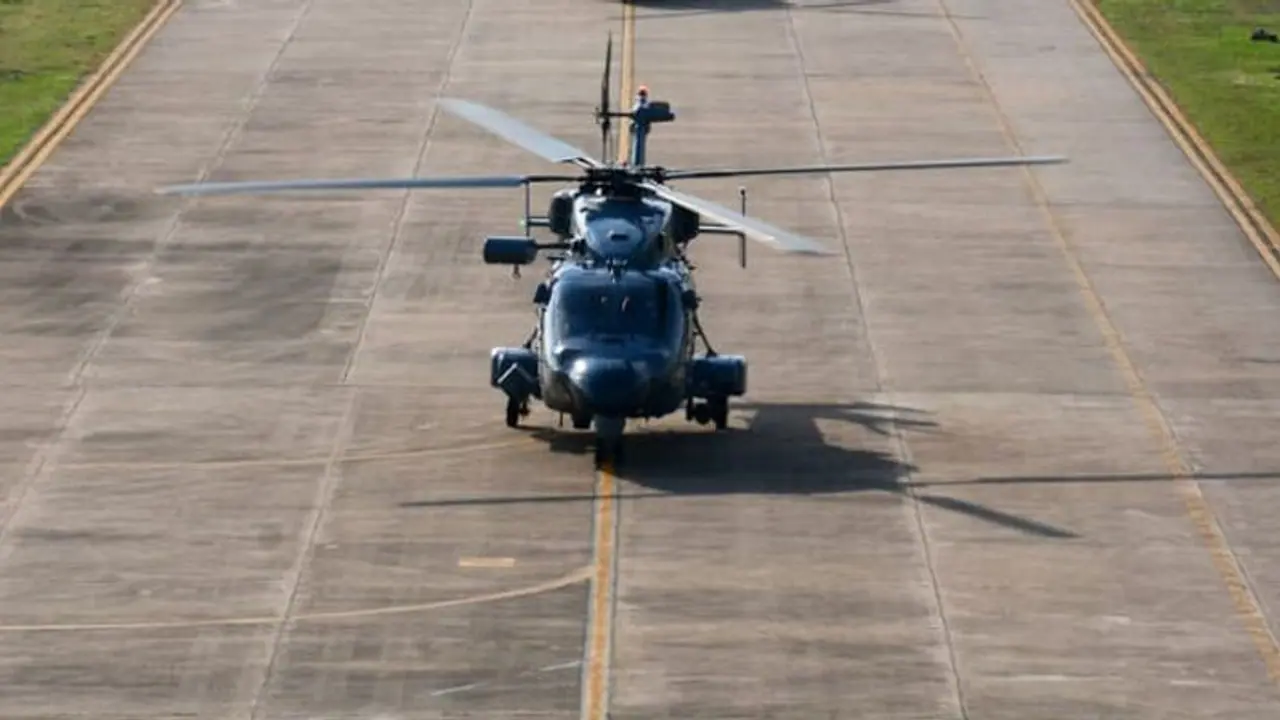The consensus is that only a comprehensive and independent review can find the answers to the current incident and the larger issues that have plagued the ALH. Defence and aeronautics expert Girish Linganna explores
On March 27th, an Indian Coast Guard (ICG) Dhruv MK-III helicopter met with an accident during a training sortie in Kochi, Kerala. The helicopter was undergoing in-flight checks when it had to make a forced landing due to control issues, leaving three personnel injured but with non-serious injuries.

As per ICG officials, the chopper was around 25 feet high when the cyclic controls, which control the longitudinal and lateral movement of aircraft, failed to respond after take-off. The pilot, with bare minimum controls, maneuvered the aircraft away from the main runway to avoid blocking the runway at the international airport, before cushioning the landing to save the three souls onboard.
The aircraft veered to the left and crashed onto the left side of the main runway. As a result of the incident, the Cochin International Airport authority temporarily suspended the airport's operations for two hours.
This is not the first incident of its kind. Earlier this month, naval pilots survived an accident involving the Advanced Light Helicopter (ALH) due to a sudden loss of power and rapid loss of height off the coast of Mumbai. The pilots carried out controlled ditching, an emergency landing on water, and were rescued by a naval patrol craft after an immediate search and rescue mission.
The incident resulted in the grounding of all ALHs operated by the Navy, Air Force, Army, and Coast Guard until precautionary checks are carried out.
ALH Chopper: Reliable Workhorse?
The ALH is an essential fulcrum for the services, designed in 1983, and used across the services for various roles, including transport of personnel and material. However, there are at least 80 known incidents involving the chopper over the past two decades. Some reports suggest that there could be even 22 accidents involving the chopper between 2017 and 2021. Parliament data shows that there were six reported incidents of the ALH.
Former Navy Chief Admiral Arun Prakash said that while the ALH has a solid design, a series of accidents and incidents indicate that there may be some design or manufacturing issues that need to be addressed on a fleet-wide basis. Multiple experts have pointed out that most likely problems related to design and engineering are plaguing the ALH fleet.
Ashok Baweja, former chairman of the HAL, declined to make any statements regarding the two ALH crashes in March as he believes it would be premature to do so before the investigation is complete. However, the consensus is that only a comprehensive and independent review can find the answers to the current incident and the larger issues that have plagued the ALH.
It is important to note that all accidents have happened in peacetime, and the most infamous accident was that in 2019 when the then GOC of the Army's Northern Command, Lieutenant General Ranbir Singh, crash-landed while on a trip from Udhampur. While the findings of the court of inquiry into the crash are not public, sources in the defence establishment told that the crash involving Lieutenant General Singh happened after the collective, which controls a part of the rotors and back, broke.
This, the sources said, was a manufacturing defect and not a maintenance defect.
The Importance of Regular Helicopter Maintenance Checks
There are three major controls in a helicopter that the pilot must use during flight: the collective pitch control, the cyclic pitch control, and the anti-torque pedals or the tail rotor control. The collective pitch control or simply the collective or the thrust lever is located on the left side of the pilot seat and is operated with the left hand.
The collective is used to make changes to the pitch angle of the main rotor blades and does this simultaneously or collectively, as the name implies. As the collective pitch control is raised, there is a simultaneous and equal increase in pitch angle of all main rotor blades, which helps in lifting the helicopter off the ground.
On the other hand, lowering the collective pitch control decreases the pitch angle, reducing lift, and allowing the helicopter to descend. Any issue with this control can lead to significant problems during flight.
Apart from the collective pitch control, there are other controls like the cyclic pitch control and the anti-torque pedals or the tail rotor control, which the pilot needs to use during flight. The cyclic pitch control, located between the pilot's legs, controls the helicopter's longitudinal and lateral movement. In contrast, the anti-torque pedals control the tail rotor, which counters the main rotor's torque, preventing the helicopter from spinning in the opposite direction.
Any malfunctioning in these controls can have disastrous consequences during flight, as demonstrated by the recent incident involving the Indian Coast Guard's Dhruv helicopter. The incident highlights the critical role of regular maintenance checks and the need to identify any manufacturing or design defects that could cause accidents.
While the Dhruv helicopter has faced multiple issues in the past, it remains an essential asset for the Indian Armed Forces, with the helicopter being used for various roles, including transportation of personnel and material. However, the recent incidents have raised concerns about the helicopter's safety and reliability, leading to precautionary checks being carried out on all Dhruv helicopters operated by the Navy, Air Force, Army, and Coast Guard.
The recent incident involving the Indian Coast Guard's Dhruv helicopter underscores the importance of regular maintenance checks and identifying any manufacturing or design defects that could lead to accidents. With the Dhruv helicopter being an essential asset for the Indian Armed Forces, it is crucial to address the safety and reliability concerns raised by recent incidents to ensure the safety of the helicopter's crew and passengers.
